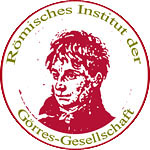Under the sign of the lily: The Farnese exhibition in the Capitoline Museums
By Ignacio García Lascurain Bernstorff
Holy years are currently a welcome occasion to organise exhibitions in Rome. Although it was the newly elected Julius III Del Monte (r. 1550-1555) who opened the Holy Door on 24 February 1550, the concept of the Jubilee Year and even its appeal go back to his immediate predecessor Paul III Farnese (r. 1534-1549). The reconstruction of the Capitoline Square for the Holy Year 1550 by none other than Michelangelo is the opening theme of a ‘small but fine’ exhibition in Palazzo Caffarelli (which is actually called Villa Caffarelli).
The exhibition ‘I Farnese nella Roma del Cinquecento’ (The Farnese in 16th century Rome), curated by Chiara Rabbi Bernard and Claudio Parisi Presicce, is intended to draw attention to the creation of one of the most important collections of the European Renaissance, based on the preparations for the jubilee year of the Council of Trent.
After the Capitol - Pope Farnese had the legendary equestrian statue of Marcus Aurelius moved here from the Lateran quarter in 1538 - the exhibition sheds light on the collectors themselves: Raphael's painting of Cardinal Alessandro Farnese (long before his election as Pope and his portrait by Titian) and his descendants. The famous palace and its rooms are then traced using selected objects.
There are some paintings - especially by El Greco - but even more so some pieces from the collection of antiquities that has been in Naples for two centuries (such as the Eros Farnese) and many drawings (studies for the frescoes in the world-famous Galleria) by Annibale Carracci (1560-1609).
The transition from the collection of antiquities to the cimelia and above all to the precious library is characterised by the figure of the intellectual and librarian Fulvio Orsini (1529-1600). The rare and extremely high-quality illuminated manuscripts (mostly from the National Library in Naples), such as a copy of Boethius' De institutione musica from the 14th century and the dedication copy of Homer's works made by Piero de Medici (1472-1503) by the famous Florentine illuminator Gherardo di Giovanni del Fora (1445-1497), deserve special mention.
This exhibition is able to give a clear direction to Stendhal's dictum that the Farnese did not lack splendour (illustration): namely splendour of the mind and scholarship. Like so much in the city of the Princes of the Apostles, this beautiful exhibition also shows the creative power of the Jubilees and their striving for beauty and perfection.
- Details
- Written by: Stefan Heid
- Category: Roman notes
 Römisches Institut der Görres-Gesellschaft
Römisches Institut der Görres-Gesellschaft







